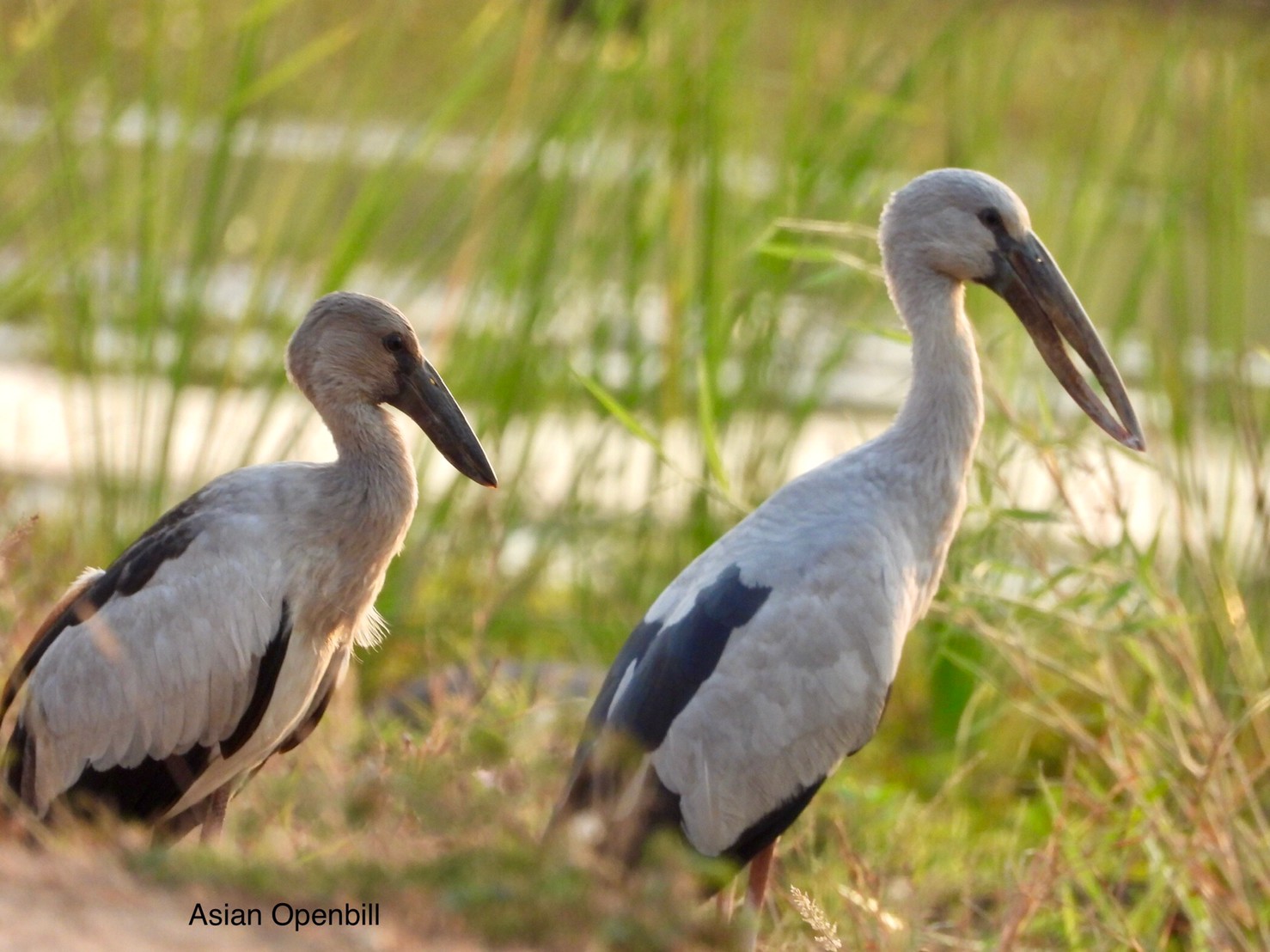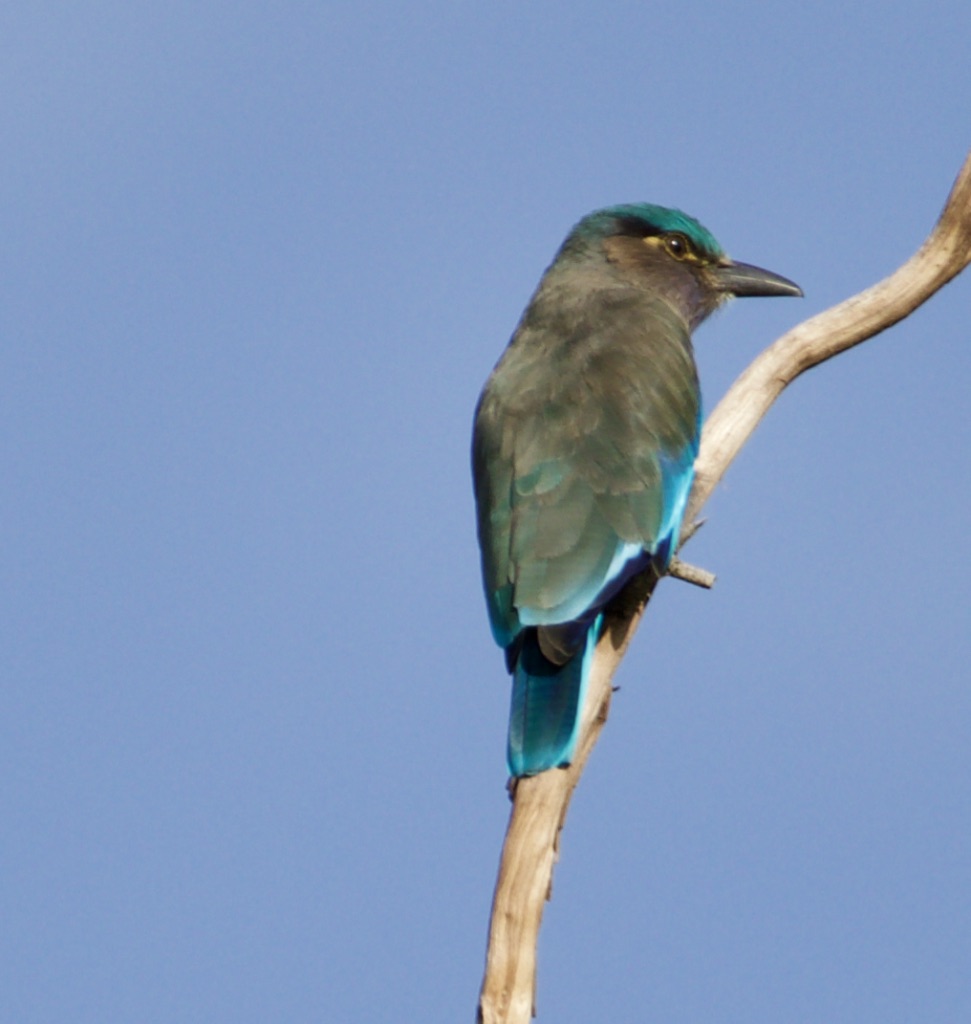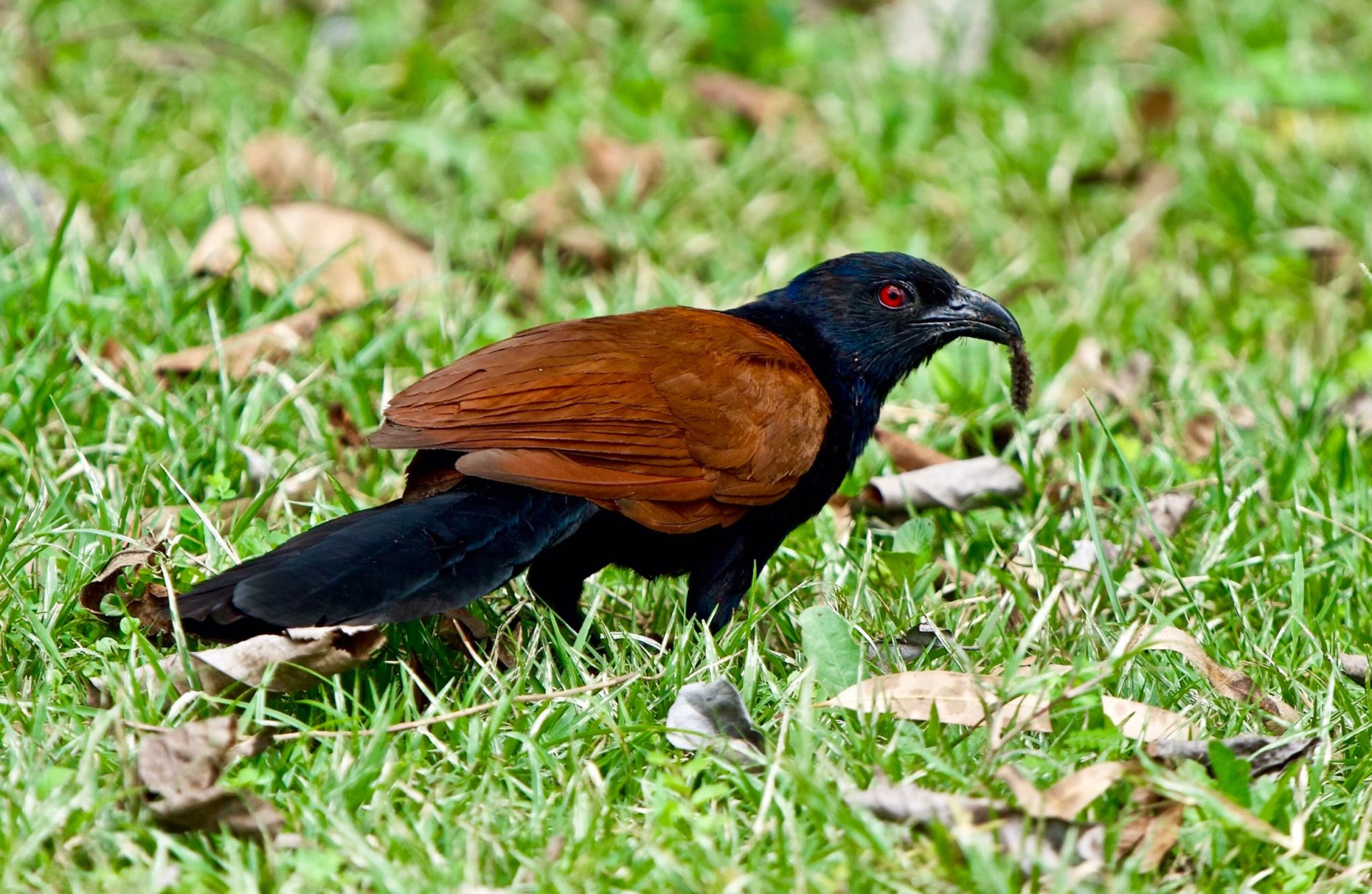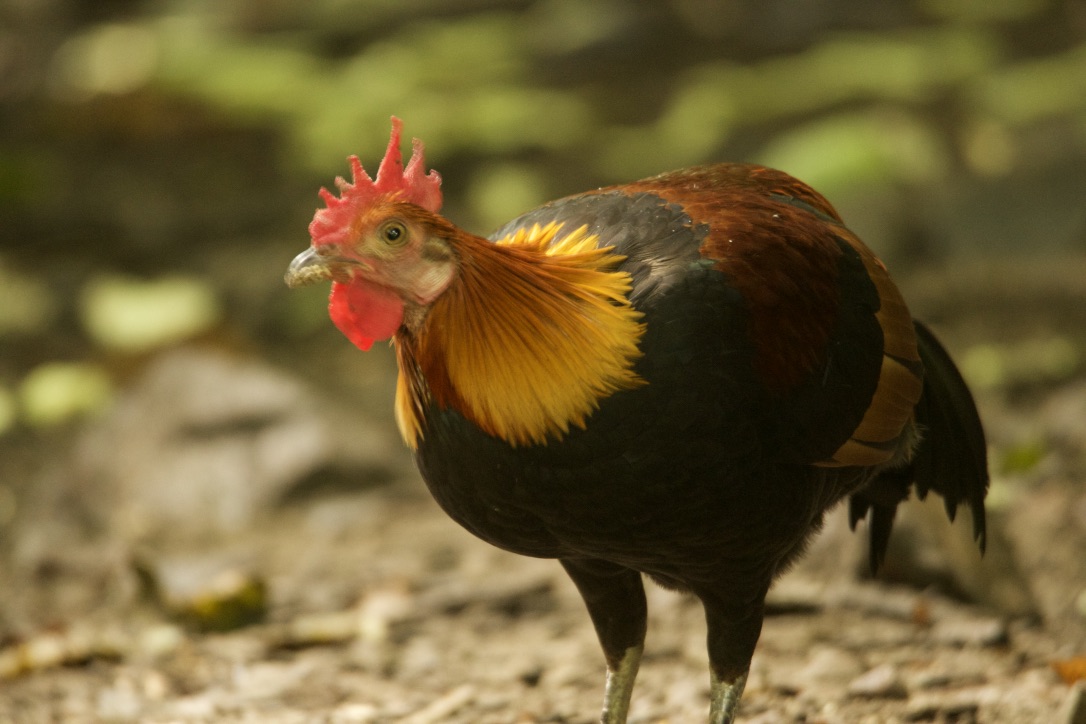Anastomus oscitans
Size: 68 – 81cm
Weight: 1.3 – 8.9kg
Found: The usual foraging habitats are inland wetlands and are only rarely seen along river banks and tidal flats. On agricultural landscapes, birds forage in crop fields, irrigation canals, and in seasonal marshes. Birds may move widely in response to habitat conditions. Young birds also disperse widely after fledging. Individuals ringed at Bharatpur in India have been recovered 800 km east and a bird ringed in Thailand has been recovered 1500 km west in Bangladesh. Storks are regularly disoriented by lighthouses along the southeast coast of India on overcast nights between August and September. The species is very rare in the Sind and Punjab regions of Pakistan, but widespread and common in India, Sri Lanka, Cambodia, Myanmar and Thailand.
Description: The Asian openbill stork is predominantly greyish (non-breeding season) or white (breeding season) with glossy black wings and tail that have a green or purple sheen. The name is derived from the distinctive gap formed between the recurved lower and arched upper mandible of the beak in adult birds. Young birds do not have this gap. The cutting edges of the mandible have a fine brush like structure that is thought to give them better grip on the shells of snails. The tail consists of twelve feathers and the preen gland has a tuft. The mantle is black and the bill is horn-grey. At a distance, they can appear somewhat like a white stork or Oriental stork. The short legs are pinkish to grey, reddish prior to breeding. Non-breeding birds have a smoky grey wings and back instead of white. Young birds are brownish-grey and have a brownish mantle.
Diet: The Asian openbill feeds mainly on large molluscs, especially Pila species, and they separate the shell from the body of the snail using the tip of the beak. The tip of the lower mandible of the beak is often twisted to the right. This tip is inserted into the opening of the snail and the body is extracted with the bill still under water. They also feed on water snakes, frogs and large insects.
Comment: Like other storks, they are silent except for clattering produced by the striking of the male’s bill against that of the female during copulation. They also produce low honking notes accompanied by up and down movements of the bill when greeting a partner arriving at the nest. Males may sometimes form polygynous associations, typically with two females which may lay their eggs in the same nest.





